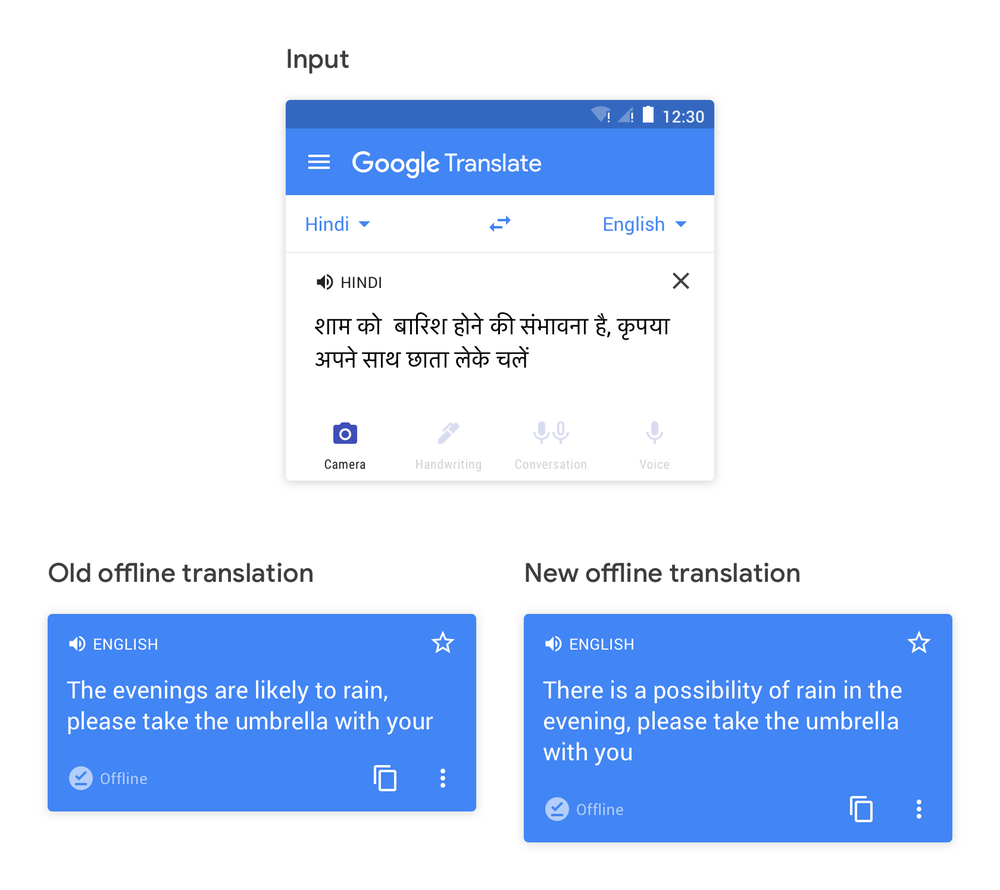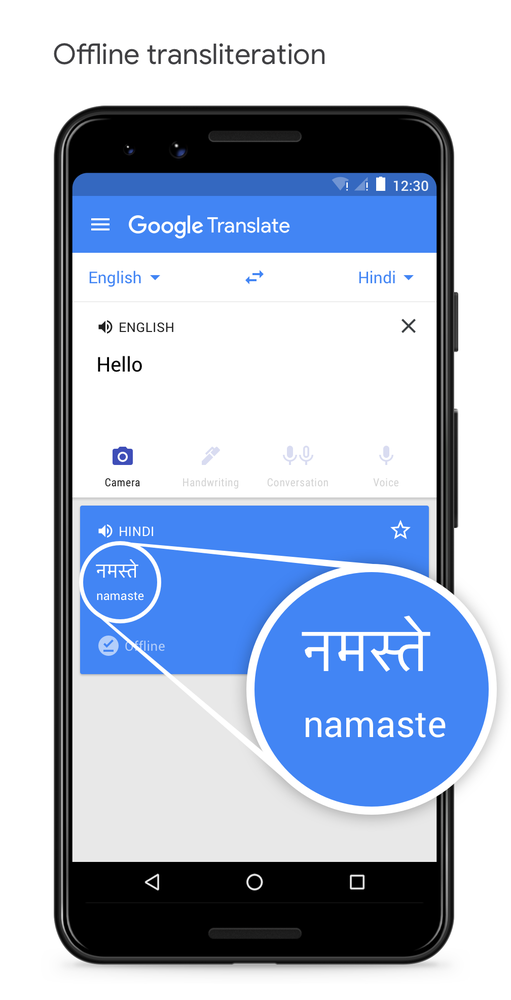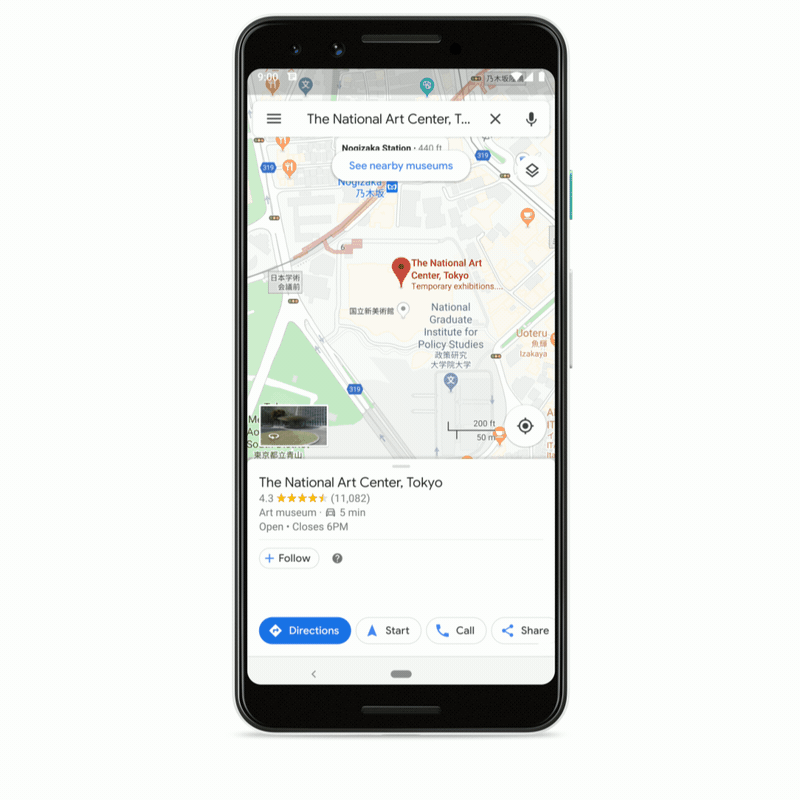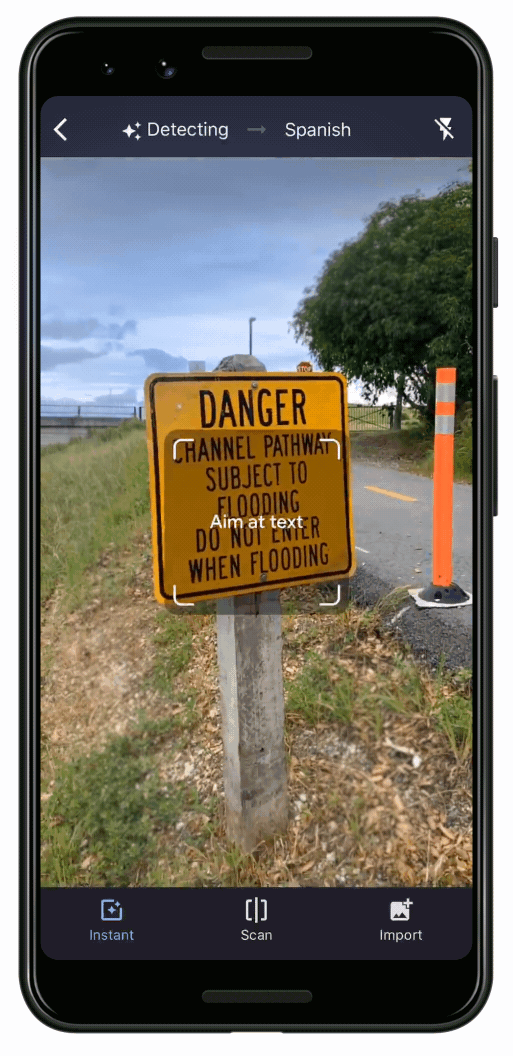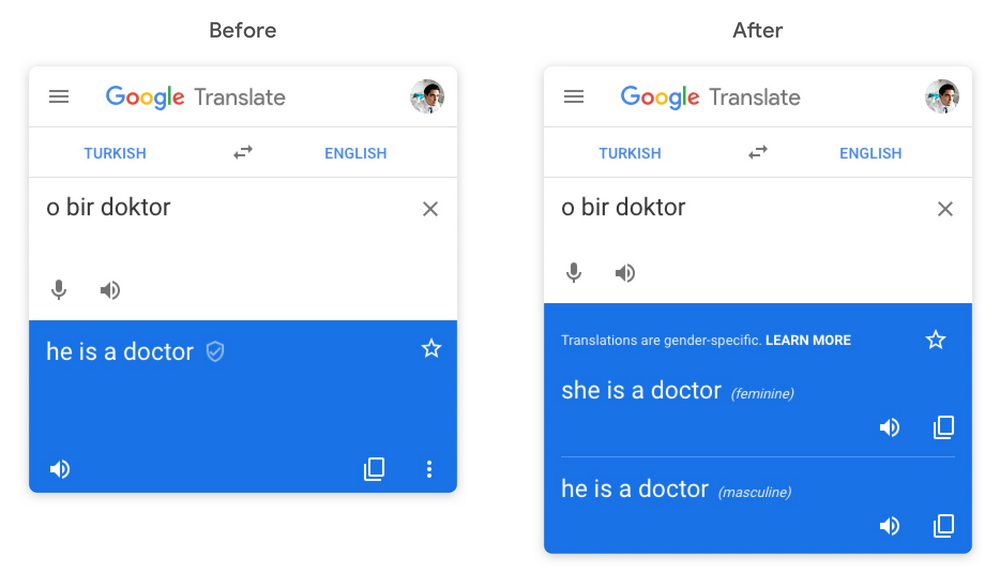Posted by Melvin Johnson, Senior Software Engineer, Google TranslateOver the past few years,
Google Translate has made significant improvements to translation quality by switching to an
end-to-end neural network-based system. At the same time, we realized that translations from our models can reflect societal biases, such as gender bias. Specifically, languages differ a lot in how they represent gender, and when there are ambiguities during translation, the systems tend to pick gender choices that reflect societal asymmetries, resulting in biased translations. For instance, Google Translate historically translated the Turkish equivalent of “
He/she is a doctor” into the masculine form, and the Turkish equivalent of “
He/she is a nurse” into the feminine form.
Recently,
we announced that we’re taking the first step at reducing gender bias in our translations. We now provide both feminine and masculine translations when translating single-word queries from English to four different languages (French, Italian, Portuguese, and Spanish), and when translating phrases and sentences from Turkish to English.
 |
| Gender-specific translations on the Google Translate website. |
Supporting gender-specific translations for single-word queries involved enriching our underlying dictionary with gender attributes. Supporting gender-specific translations for longer queries (phrases and sentences) was particularly challenging and involved making significant changes to our translation framework. For these longer queries, we focused initially on Turkish-to-English translation. We developed a three-step approach to solve the problem of providing a masculine and feminine translation in English for a gender-neutral query in Turkish.
Detecting Gender-Neutral QueriesMany Turkish sentences that refer to people are gender-neutral, but not all are. Detecting which queries are eligible for gender-specific translations is a hard problem because Turkish is
morphologically complex, meaning that reference to a person can either be explicit with a gender-neutral pronoun (e.g.
O, Ona) or implicitly encoded. For example, the sentence “
Biliyor mu?” has no explicit gender-neutral pronoun but can be translated as either “
Does she know?” or “
Does he know?”. This complexity means that we cannot use a simple list of gender-neutral pronouns to detect gender-neutral Turkish queries and need a machine-learned system. We estimate that approximately 10% of Turkish Translate queries are ambiguous, and eligible for both feminine and masculine translations.
To detect these queries, we use state-of-the-art text classification algorithms (same as those used in our
Cloud Natural Language API) to build a system that is able to detect when a given Turkish query is gender-neutral. Since this introduces an additional step before obtaining the translations, we had to carefully balance model complexity with latency. We trained our system on thousands of human-rated Turkish examples, where raters were asked to judge whether a given example is gender-neutral or not. Our final classification system is a convolutional neural network that can accurately detect queries which require gender-specific translations.
Generating Gender-Specific TranslationsNext, we enhanced our underlying
Neural Machine Translation (NMT) system to produce feminine and masculine translations when requested. When no gender is requested, we trained the model to produce the default translation. This involved:
- Identifying and dividing our parallel training data into those with feminine words, those with masculine and those with ungendered words.
- Adding an additional input token to the beginning of the sentence to specify the required gender to translate to, similar to how we build multilingual NMT systems:
- <2MALE> O bir doktor → He is a doctor
- <2FEMALE> O bir doktor → She is a doctor
- Training our enhanced NMT model on the feminine, masculine and ungendered data sources. We experimented with various mixing ratios for these sources to enable the model to perform equally well on the three tasks.
If a user's query is determined to be gender-neutral, we add a gender prefix to the translation request. For these requests, our final NMT model can reliably produce feminine and masculine translations 99% of the time. Additionally, the system maintains translation quality on queries without the gender prefix.
Checking for AccuracyFinally, we have a step that decides whether to display the gender-specific translations. Since the training data that produces the masculine translation is different from the training data that produces the feminine translation, there may be differences between the two translations unrelated to gender. If the gender-specific translations are determined to be low quality, we show only the single default translation. To determine the quality of the gender-specific translations, we verify:
- If the requested feminine translation is feminine.
- If the requested masculine translation is masculine.
- If the feminine and masculine translations are exactly equivalent with the exception of gender-related changes. Even minor changes in the wording between the translations will result in being filtered.
 |
| Top: The masculine and feminine translations differ only with respect to gender i.e. “he” and “his” vs “she” and “her”. Hence, we will show gender-specific translations. Bottom: The masculine and feminine translations differ correctly with respect to gender i.e. “he” vs “she”. However, the change from “really” to “actually” is not related to gender. Hence, we will filter gender-specific translations and display the default translation. |
Putting it all together, input sentences first go through the classifier, which detects whether they’re eligible for gender-specific translations. If the classifier says “yes”, we send three requests to our enhanced NMT model—a feminine request, a masculine request and an ungendered request. Our final step takes into account all three responses and decides whether to display gender-specific translations or a single default translation. This step is still quite conservative in order to maximize the quality of gender-specific translations shown; hence our overall recall is only around 60%. We plan to increase our coverage and add support for more complex sentences in future iterations.
This is just the first step toward addressing gender bias in machine-translation systems and reiterates Google’s commitment to
fairness in machine learning. In the future, we plan to extend gender-specific translations to more languages and to address non-binary gender in translations.
Acknowledgements:This effort has been successful thanks to the hard work of a lot of people including, but not limited to, the following (in alphabetical order of last name): Lindsey Boran, HyunJeong Choe, Héctor Fernández Alcalde, Orhan Firat, Qin Gao, Rick Genter, Macduff Hughes, Tolga Kayadelen, James Kuczmarski, Tatiana Lando, Liu Liu, Michael Mandl, Nihal Meriç Atilla, Mengmeng Niu, Adnan Ozturel, Emily Pitler, Kathy Ray, John Richardson, Larissa Rinaldi, Alex Rudnick, Apu Shah, Jason Smith, Antonio Stella, Romina Stella, Jana Strnadova, Katrin Tomanek, Barak Turovsky, Dan Schwarz, Shilp Vaishnav, Clayton Watts, Kellie Webster, Colin Young, Pendar Yousefi, Candice Zhang and Min Zhao.

